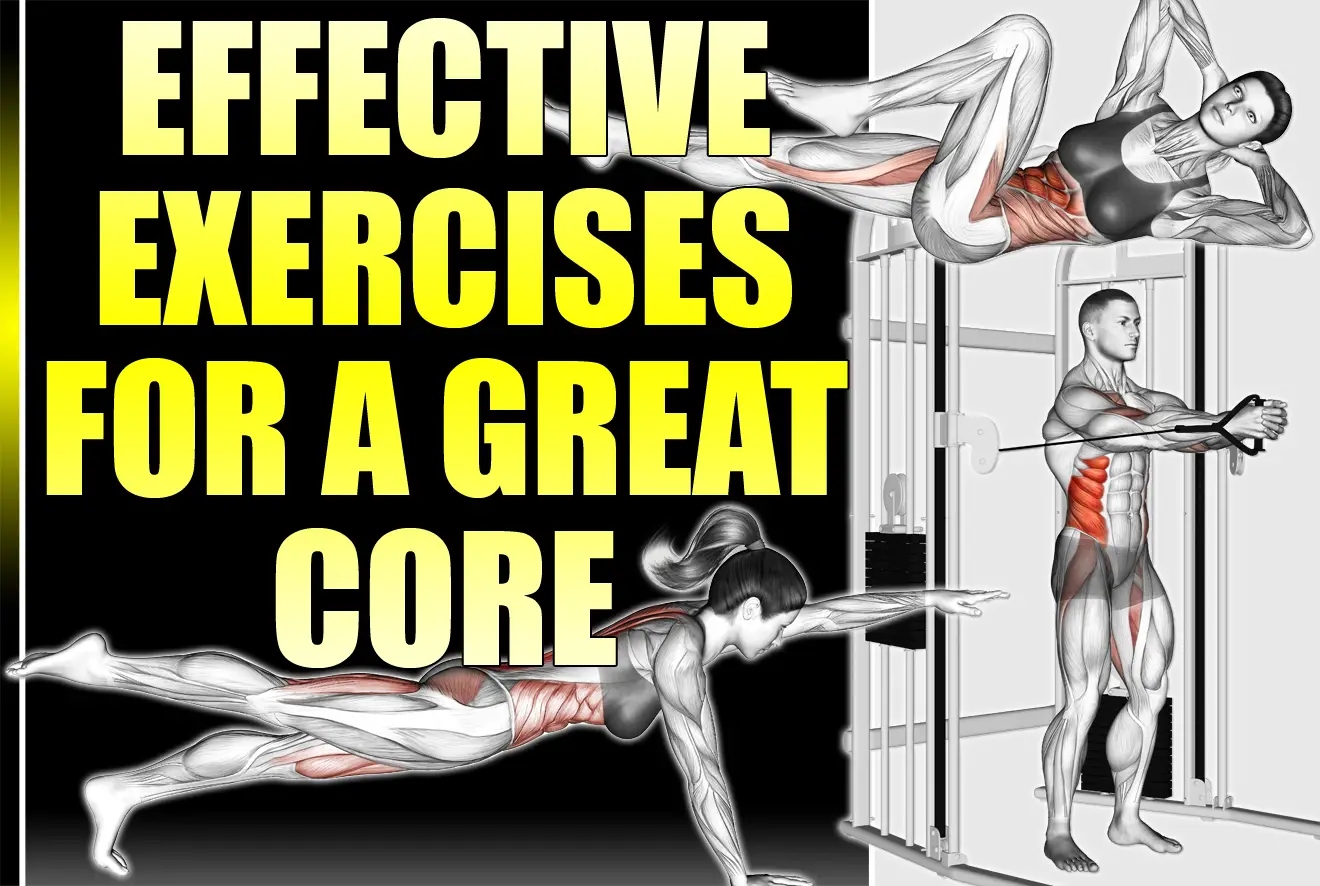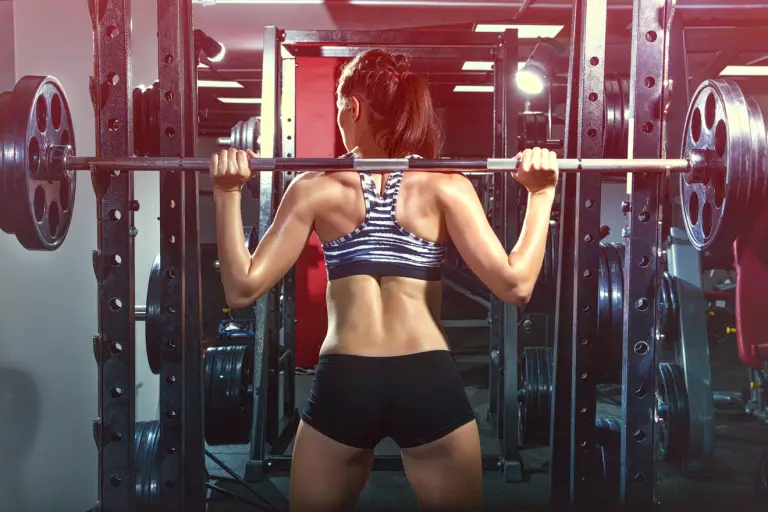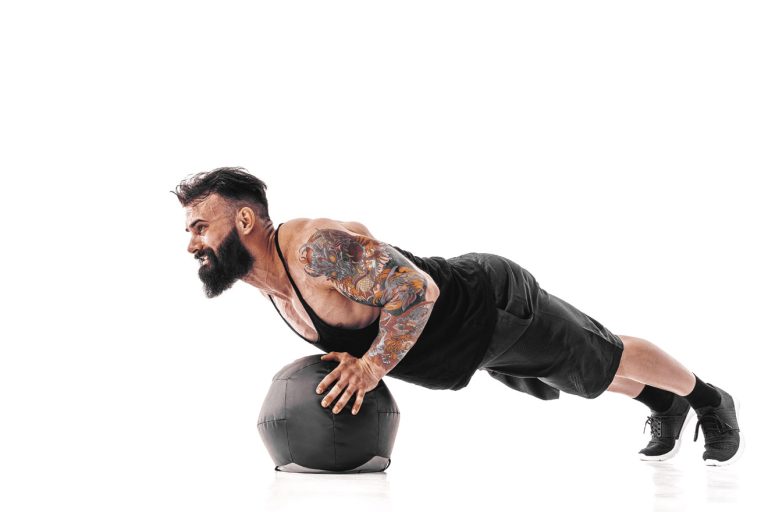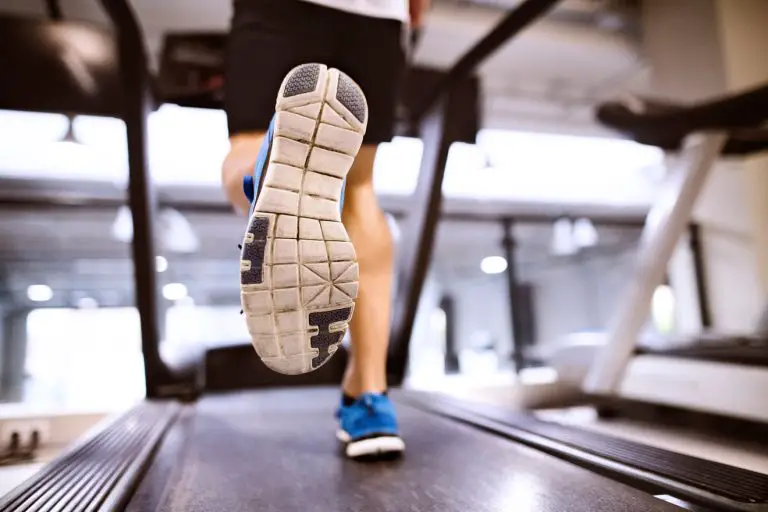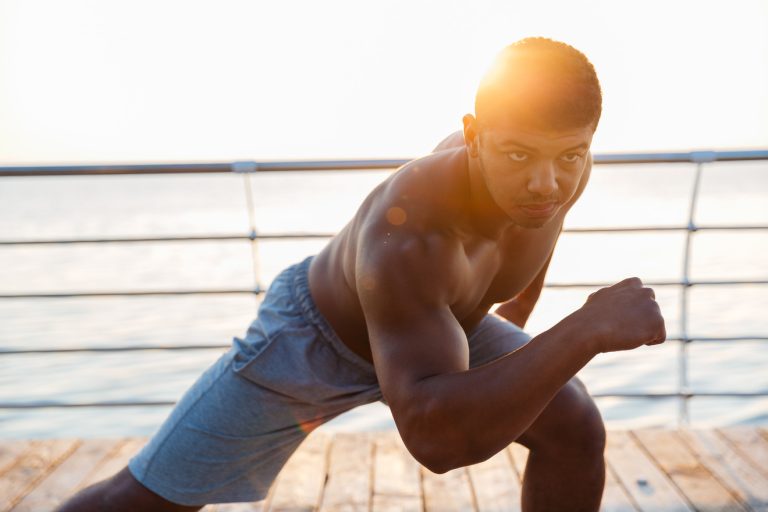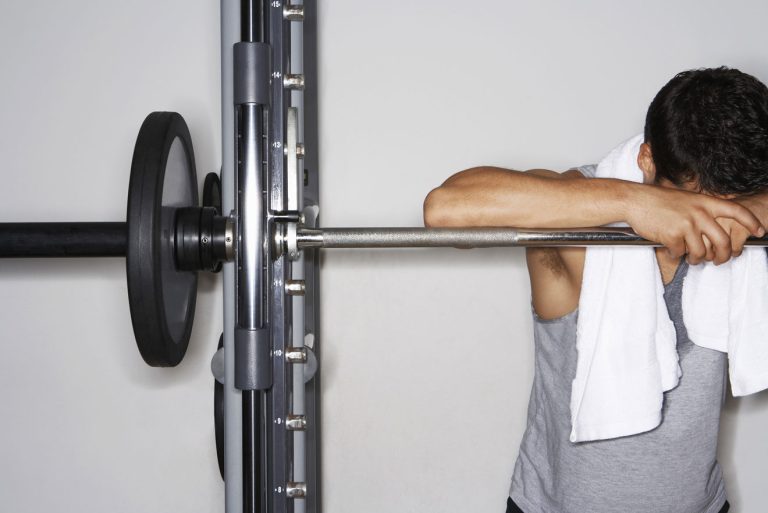Effective exercises for a great core
Having a strong and stable core is much more important than people realize. Core strength and stability can be the difference between performing your best and getting injured. In this post you will learn why core training is very important and what weight training and bodyweight exercises you can use to develop a strong and stable core.
What is the core?
The ‘core’ refers to all of the muscles in the torso, especially the abs, obliques, erector spinae (spinal erectors), and other deep muscles that attach to the spine and pelvis (Table 1).
Table 1. Major muscles of the core and their primary functions
| Major muscles of the core | Primary functions |
|---|---|
| Rectus abdominis | Flexion of the lumbar spine |
| Obliques | Flexion, lateral flexion and rotation of the lumbar spine; application of intra-abdominal pressure |
| Transverse abdominis | Stabilization of the pelvis and lumbar spine during movement; compression and support of viscera; assistance in exhalation; assistance in expulsion of abdominal contents (urination, defecation, vomiting, childbirth) |
| Erector spinae | Extension, lateral flexion and rotation of the cervical, lumbar and thoracic spine |
| Quadratus lumborum | Lateral flexion and rotation of the lumbar spine; stabilization of the lumbar spine and pelvis |
| Iliopsoas | Flexion of hip; rotation of the thoracic and lumbar spine |
Why is core training very important?
The core as a whole has many functions, including:
- Respiration (exhalation)
- Compression and support of internal organs (viscera)
- Flexion, extension, and rotation of the spine
- Stabilization of the spine and pelvis
- Transference of weight from one side of the body to the other side of the body
- Transference of weight from the upper body to the lower body, and vice versa
- Power generation
Having a strong and stable core is therefore very important for strength, power, speed, agility, balance, coordination, gait, and overall athleticism. By allowing you to move, work, train, and breathe more efficiently, a strong and stable core is crucial for optimal performance, as well as injury prevention. Because it compresses and supports the internal organs, a strong core is also important for appearance. All of this results with a better quality of life.
Effective core training
Much more goes into training your core than developing your abs. Although a six pack of abs may look great, it is not indicative of a strong and stable core. Professional core training involves improving all of the fitness-related functions of the core listed above by performing different types of training, from weight training and bodyweight training to power training, plyometrics, and cardio. However, this post will only be concerned with weight training and bodyweight training. These two types of training can take you very far in terms of developing a strong and stable core provided you use a wide range of exercises — isolation, compound, bilateral, unilateral, dynamic, isometric, and functional.
- Isolation exercises involve the use of one joint, whereas compound exercises involve the use of more than one joint.
- Bilateral exercises involve the use of both sides of the body simultaneously, whereas unilateral exercises involve the use of only one side.
- Dynamic exercises are those in which the muscles change in length when they contract, whereas isometric exercises are those in which the muscles do not change in length when they contract, making them great for developing stability.
- Functional exercises are those that involve natural movement patterns that you use in everyday activities and are therefore great for developing ‘functional fitness’.
Note that my ebook promotes effective core training by including all major types of training (weight training, plyometrics, cardio, etc.) and incorporating all types of exercise (compound, unilateral, functional, etc.).
Effective exercises for the core
Presented in no particular order, the following weight training and bodyweight exercises can help you to develop a strong and stable core.
Bicycle crunch
In a classic study conducted by the Biomechanics Lab at San Diego State University in 2001, 13 common ab exercises were compared to see which ones are the most effective at activating the abs and the obliques. The bicycle crunch (Figure 1) came first at activating the abs and it came second at activating the obliques after the captain’s chair leg and hip raise (explained next). But that’s not the only reason you should be using the bicycle crunch: It’s a brilliant functional exercise that gets your whole body involved and strengthens the spinal rotation, hip flexion, and hip extension movement patterns of your body.
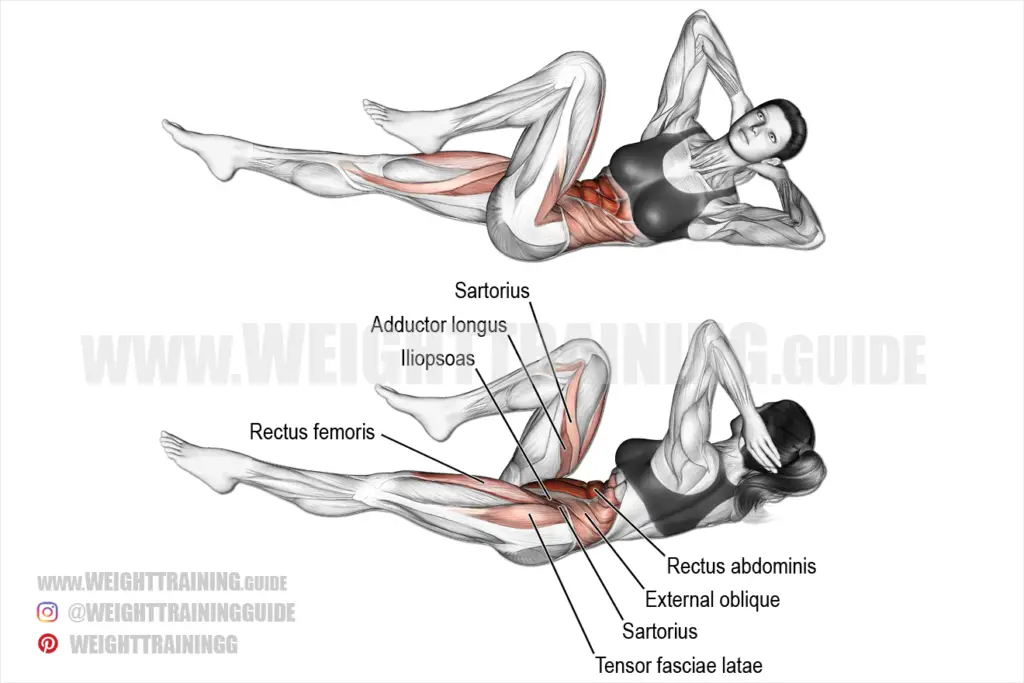
Captain’s chair leg and hip raise
In the same study mentioned above, the captain’s chair leg and hip raise (Figure 2) was found to be the most effective exercise at activating the obliques and the second-most effective at activating the abs, producing 310% more mean activity in the former and 212% more mean activity in the latter compared with the standard crunch. (The standard crunch, by the way, was found to be relatively ineffective at activating the abs and obliques.)
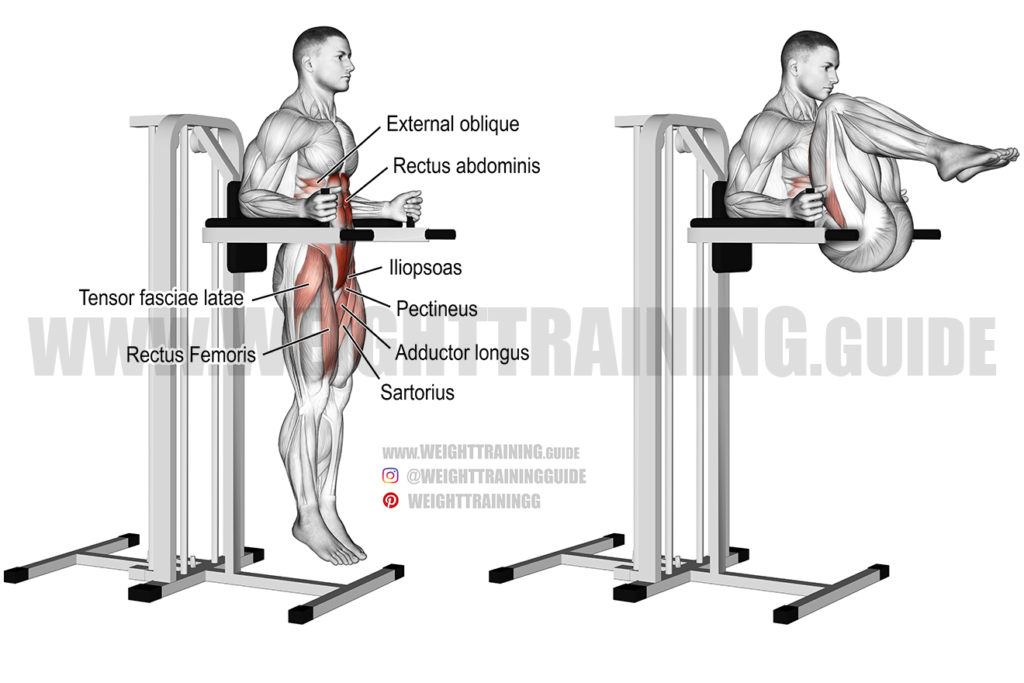
Weighted stability ball crunch
The weighted stability ball crunch (Figure 3) came third at activating the abs, producing 139% more mean activity than the standard crunch. This exercise was also found to be the most effective at isolating the abs and obliques. Compared with the standard crunch, the stability ball crunch allows for greater range of motion, and the instability of the ball forces the recruitment of more stabilizer muscles in the core.
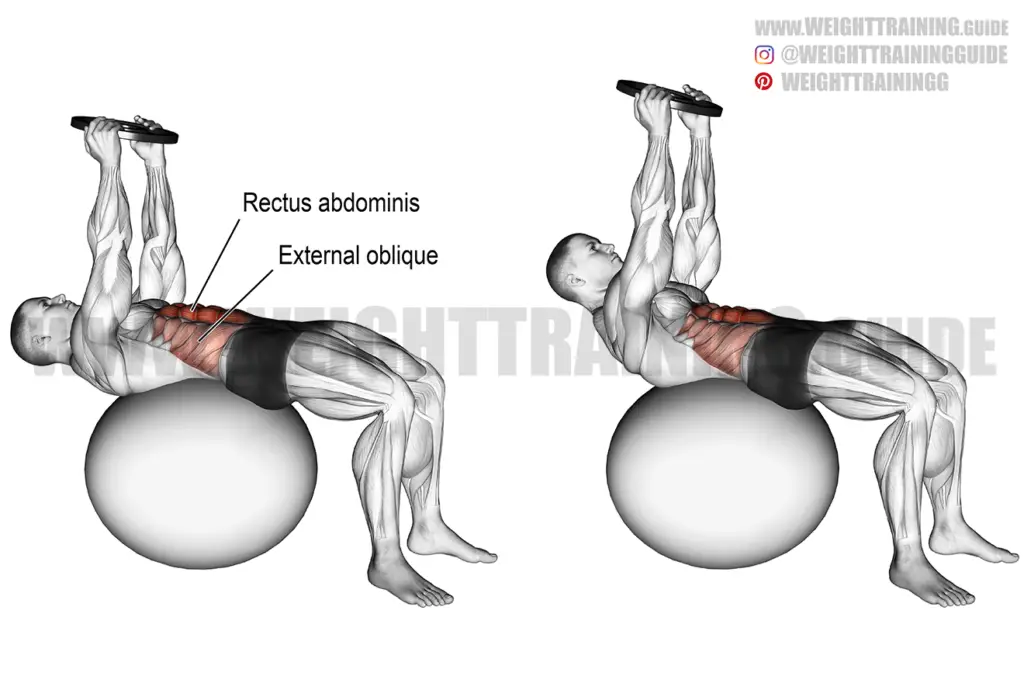
Front plank
Targeting the rectus abdominis, the front plank (Figure 4) is probably the most popular isometric core exercise. If performed properly, compared with other ab exercises it is easier on the back because it does not require spinal flexion. The goal with the front plank is to hold the position for a prescribed period of time without allowing the hips to sag or rise. Raise one leg off the floor to make the exercise more challenging. This will also get the obliques and other muscles involved to stabilize the resultant rotational forces in the core.
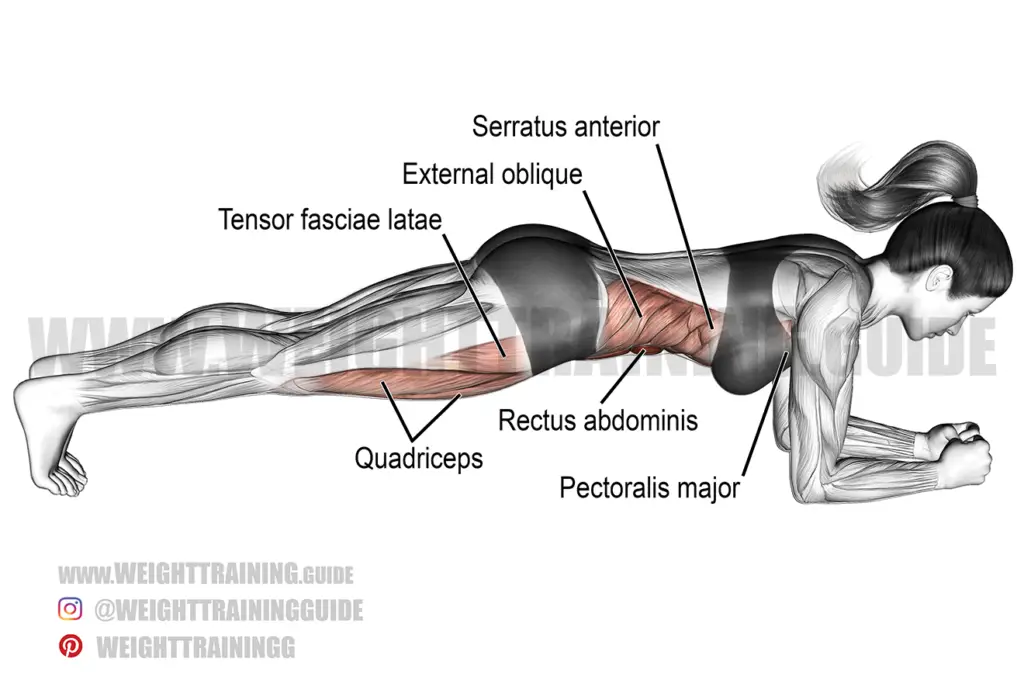
Wheel rollout
Once you master the front plank, it’s time to graduate to the wheel rollout (Figure 5), and then to the standing wheel rollout, both of which incorporate isometric core training with dynamic upper- and lower-body training. These exercises simultaneously isometrically train the core and strengthen the hip flexion and shoulder extension movement patterns of the body. Be sure to roll out only as far as you can maintain a neutral spine. At first, you will probably not be able to roll out very far. Over time, you will be able to roll out increasingly farther.
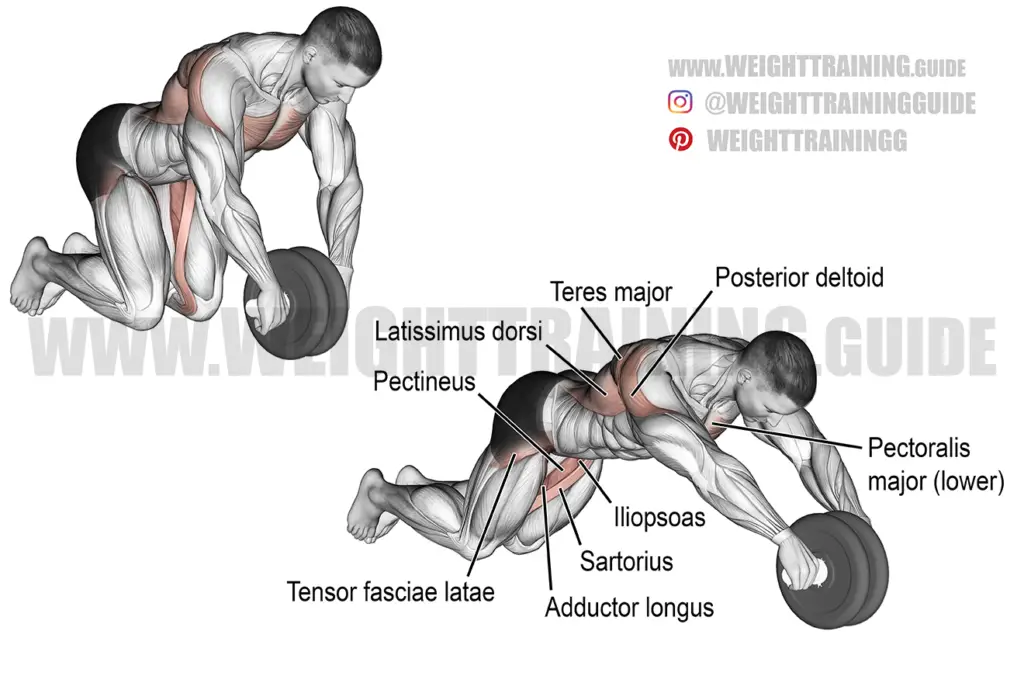
High bird dog plank
The high bird dog plank (Figure 6) is a fantastic functional bodyweight exercise that isometrically targets your abs, obliques, and spinal erectors. The exercise involves getting into a high plank position and holding up one arm and the opposing (contralateral) leg for a set period of time, before switching limbs. This not only puts the core under a lot of stress but also helps to improve balance and coordination. Keep your neck neutral, and do not allow your back to sag or your bottom to rise.
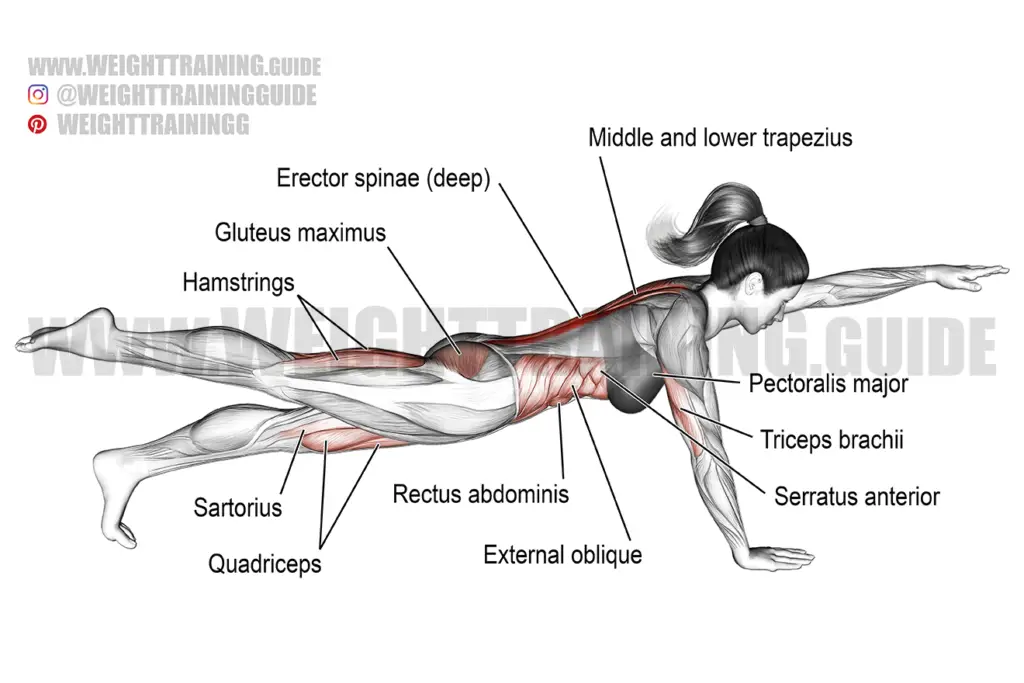
Side plank hip abduction
The side plank hip abduction (Figure 7) is a rare but very effective bodyweight exercise for strengthening the hip abduction and lateral spinal flexion movement patterns of the body, while helping to improve coordination. The exercise can be performed in a single movement by simultaneously raising the hip off the floor and spreading the legs apart, or it can be performed in a two-step process by first raising the hip off the floor and then spreading the legs apart. Of course the two-step method is easier. To preserve shoulder health, keep your elbow directly under your shoulder.
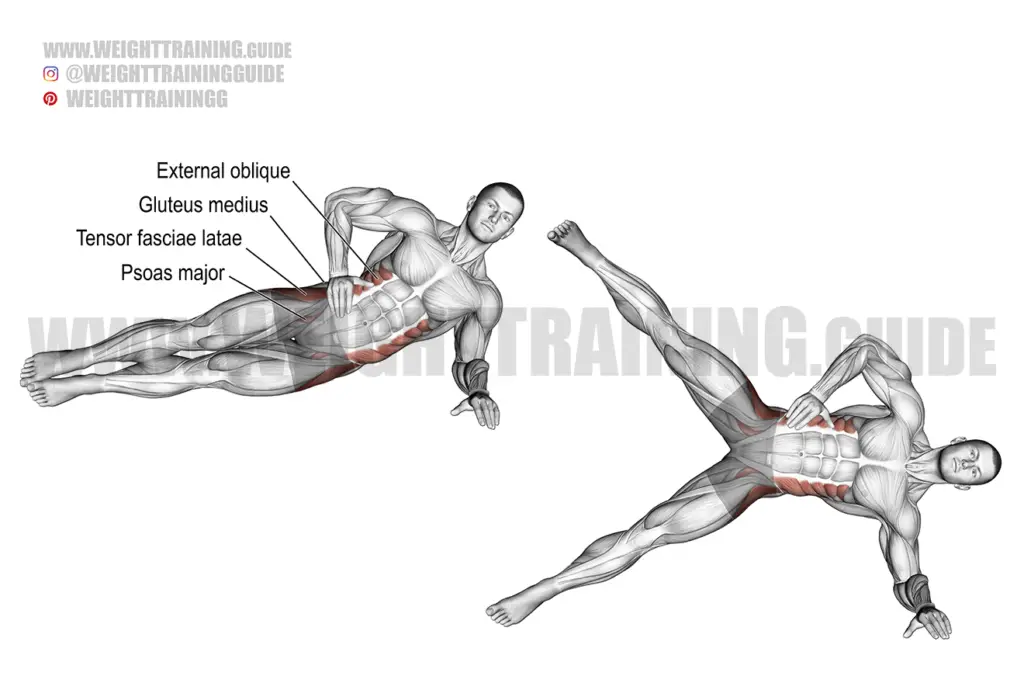
Stability ball jackknife
If you have access to a stability ball, the stability ball jackknife (Figure 8) is definitely an exercise you should consider using. Although targeting the iliopsoas (which are hip flexors), the abs and obliques act as synergists. The stability ball jackknife is performed by getting into a push-up position with your legs resting on a stability ball, then flexing and extending your hips and knees, with the ball rolling under your legs. Unlike in Figure 8, the neck should be kept neutral and the knees should be pulled all the way up to the chest. Note that the lower the ball is on your shins, the shorter will be the range of motion. Therefore, in order to be able to pull your knees all the way up to your chest, start with the ball close to your knees.
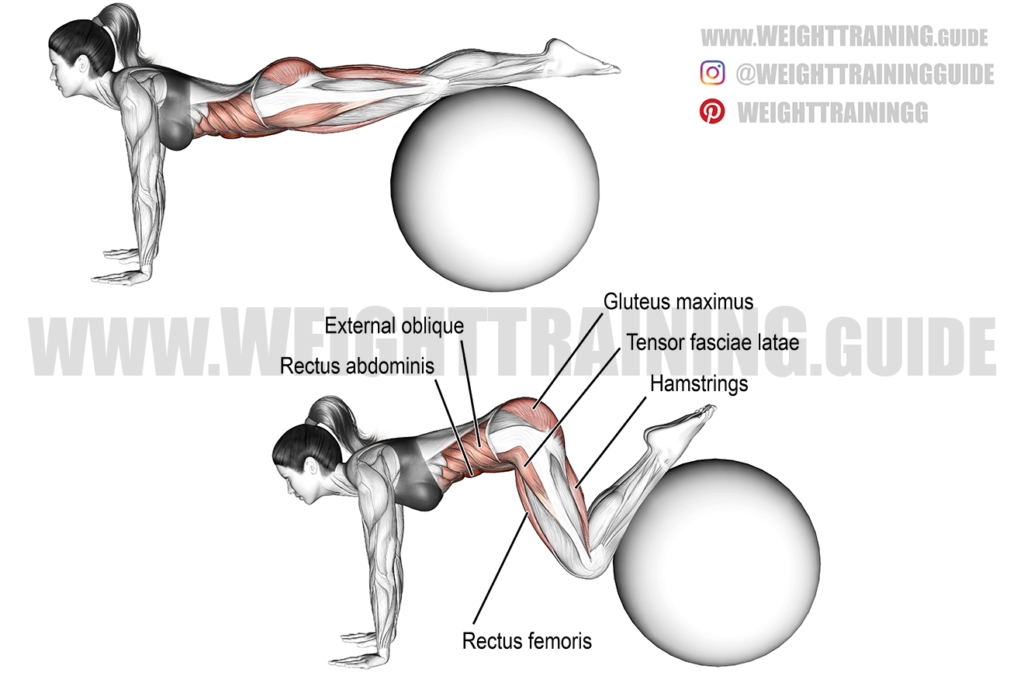
Cable twist
Targeting your internal and external obliques, the cable twist (Figure 9) is a brilliant exercise for strengthening the rotational movement pattern of the spine. The exercise involves lifting the weight plates by twisting your upper body while keeping your arms straight and your lower body facing away from the cable machine. Unlike in Figure 9, the cable should be shoulder height. While doing this exercise, it’s a good idea to stop halfway through some reps, hold the stirrup/handle, and try to resist the rotational force. This will strengthen your core’s ability to resist rotational forces — although the best exercise for this is the cable horizontal Pallof press (explained next). A similar exercise to the cable twist that you should also consider is the cable wood chop.
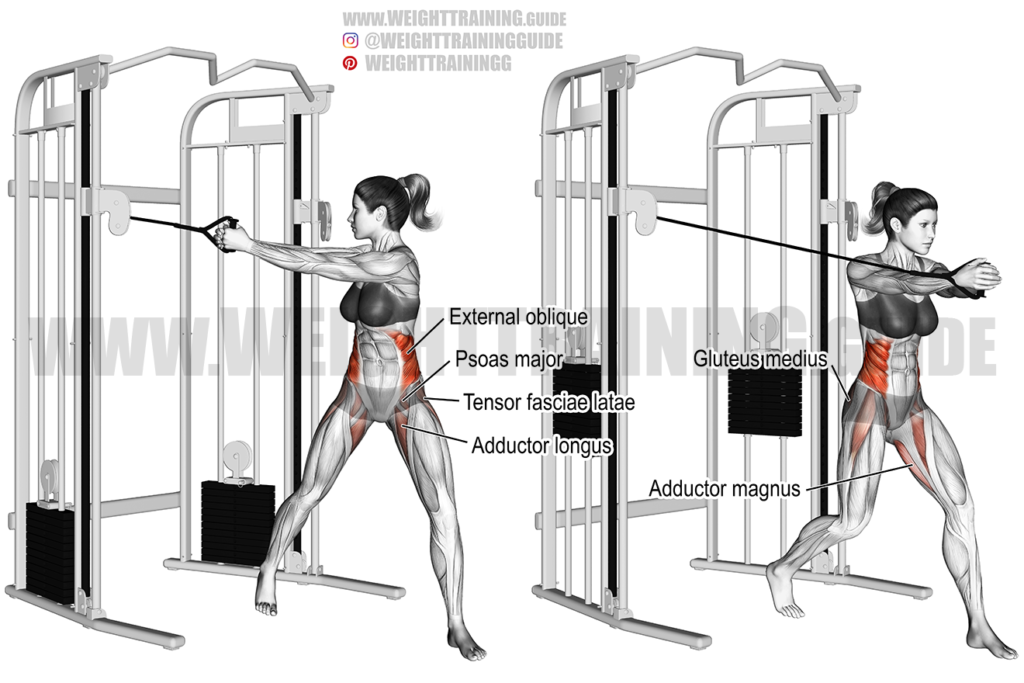
Cable horizontal Pallof press
One of the most effective exercises for developing core stability is the cable horizontal Pallof press (Figure 10). In particular the exercise is used to develop the core’s ability to resist rotational or twisting forces. Despite looking similar to the cable twist, the two exercises are very different. Notice in Figure 10 that the weight plates are not raised and lowered during the repetitions. Instead the plates remain at the same height, with the arms being extended and held out in front of the chest for a prescribed period of time, before being returned to the chest. All muscles are trained isometrically. A similar exercise used to develop the core’s ability to resist lateral spinal flexion is the cable vertical Pallof press.
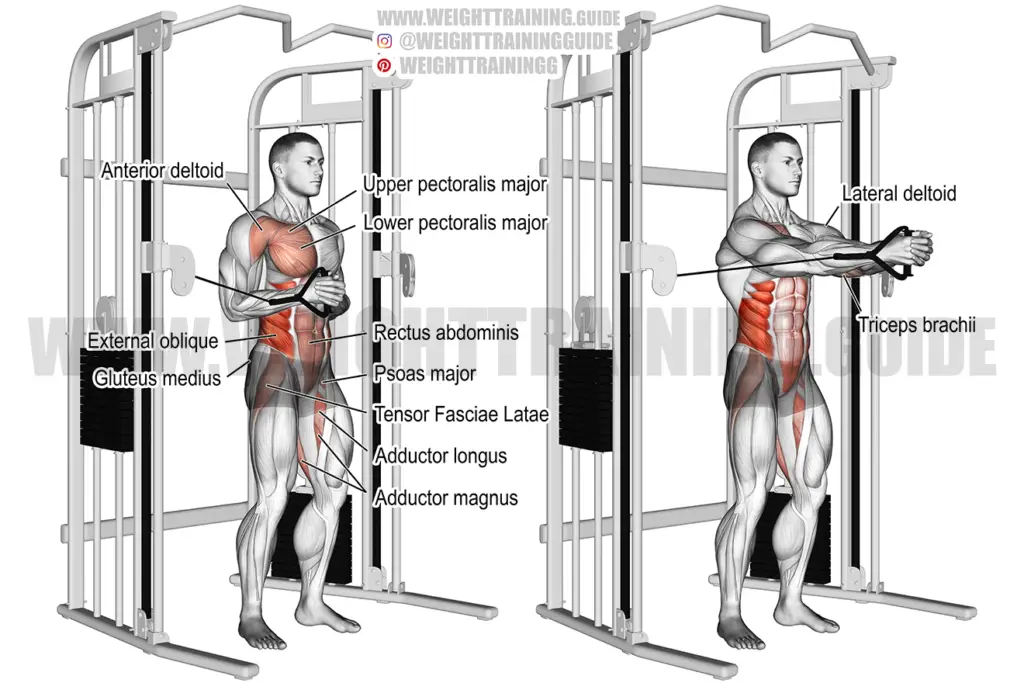
Barbell deadlift
Although not considered a core exercise, the barbell deadlift (Figure 11) is very effective at strengthening many core muscles, especially the spinal erectors. When lifting heavy, the exercise puts the core under a lot of stress, helping to improve its stability and ability to transfer weight from the upper body to the lower body, and vice versa. Performing the barbell deadlift safely and in good form takes more practice than most people realize. Keep the barbell close to your body to improve mechanical leverage.
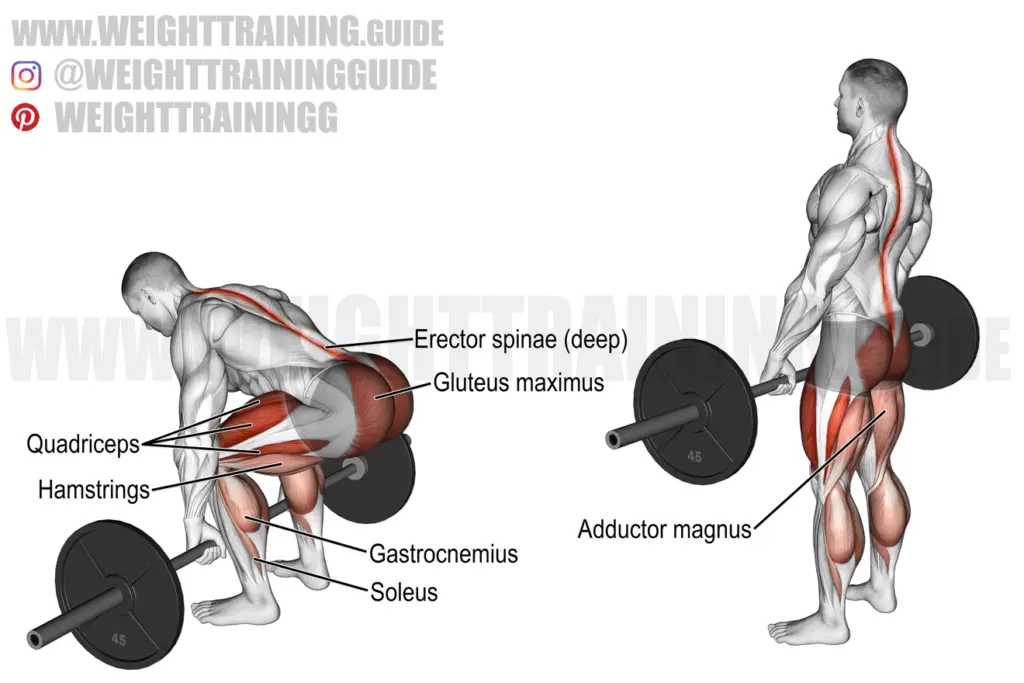
Barbell lunge
As with the barbell deadlift, the barbell lunge (Figure 12) is not considered a core exercise but can help to develop a very strong and stable core, along with balance and coordination. The exercise can put the core under a lot of stress and, as a unilateral lower-body exercise, can help to improve its ability to transfer weight from one side of the body to the other side.
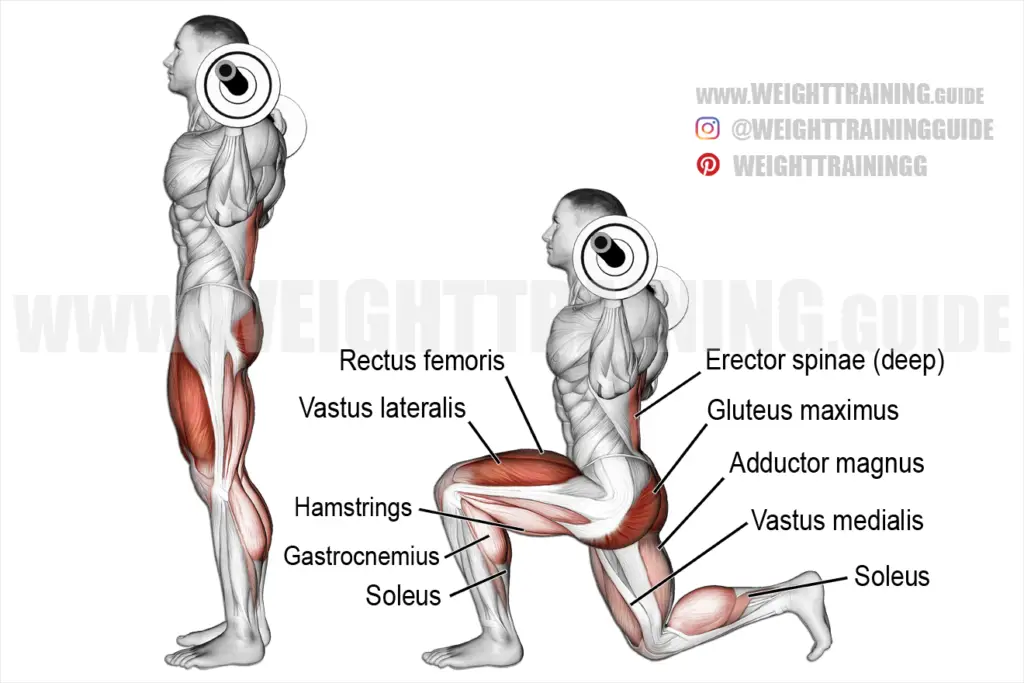
As explained at the start of this post, the core has many functions and training the core has many benefits. The wide range of exercises described in this post can help you to improve most of the functions and thus develop a great core.
A strong and stable core is essential if you want a great body. To learn how to create a great-looking body that’s also physically fit in every important way, download my ebook.

